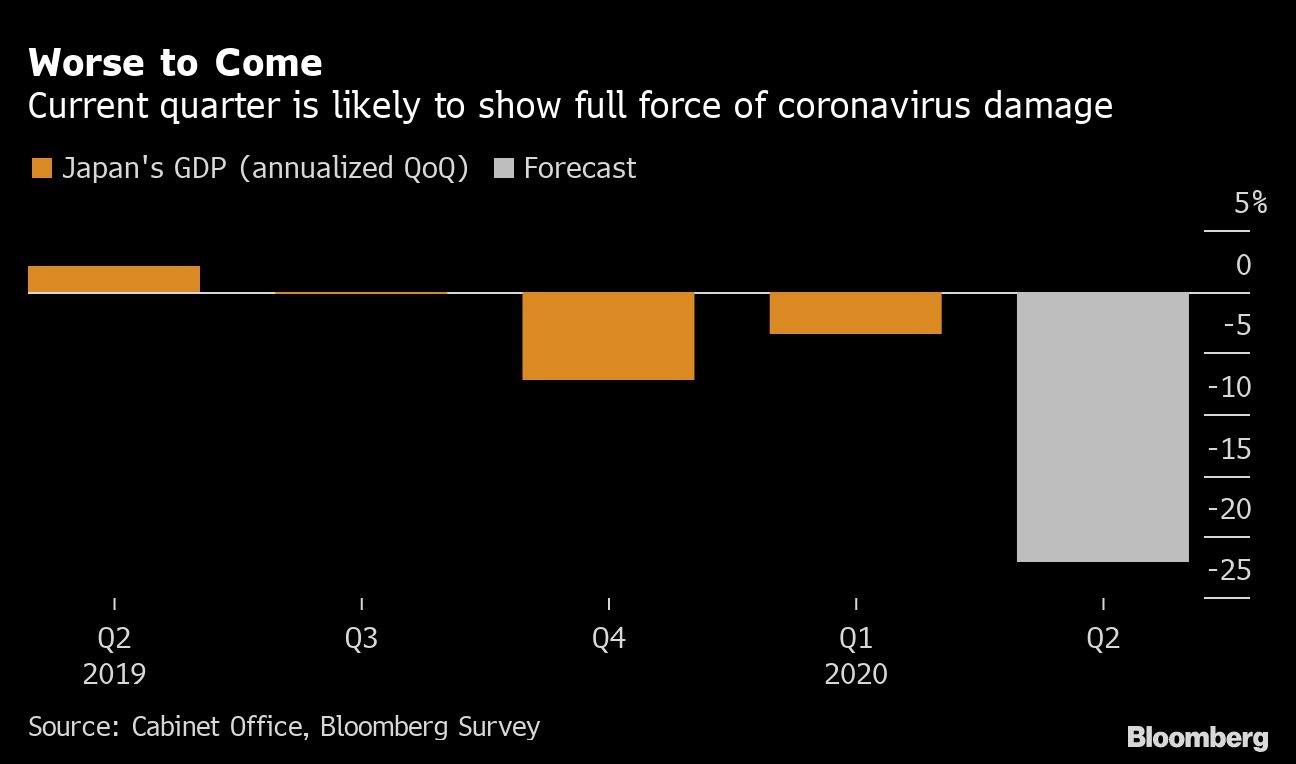May 24, 2020
Abe declares end to Japan emergency and seeks to boost economy
, Bloomberg News
Japan Is Set to Lift State of Emergency for Tokyo
The Japanese government ended its nationwide state of emergency Monday as cases tail off and announced a decision on funding for a new aid package to help a virus-battered economy.
Prime Minister Shinzo Abe told a news conference Monday that reviving the economy was now the top priority, and his government will decide on a second extra budget Wednesday to help people and businesses reeling from the pandemic.
“Every area of the country has met the conditions for ending the emergency, which are extremely strict by global standards,” Abe said. “In Japan’s own way, we have largely brought the infection under control in a month and a half.”
Abe said the combined economic measures to be funded by the first and second extra budgets will total over 200 trillion yen (US$1.86 trillion). The prime minister has already said the latest round of help will offer more support to companies through loans and rent subsidies, improved income support for furloughed workers and help for university students.
The first extra budget, which came less than a month ago, helped fund a record 117 trillion yen economic rescue plan, equivalent to more than 20 per cent of GDP.
Abe reminded people to be on guard for a second wave of infections and said that, in the worst case, a state of emergency may have to be reintroduced. Border controls will continue to be tightened, as the virus ravages other parts of the world, he added.
Abe said professional baseball will start from next month without spectators, and concerts could resume, albeit with crowds of less than 100 people. Conditions in each region will be examined every three weeks to determine whether measures can be loosened.
While Japan has suffered far fewer coronavirus infections and deaths than any of its Group of Seven peers, Abe’s handling of the outbreak has reinforced concerns that his government has grown complacent after seven years in power. He has been criticized for delaying an emergency declaration when local cases began to surge and for being slow to close Japan’s borders to Chinese visitors.
Abe’s difficulties provide a warning to other world leaders who, like him, weathered the initial pandemic shock only to be confronted with a historic economic slowdown. Analysts expect Japan’s economy to suffer a contraction of almost 22 per cent this quarter, the deepest for records back to 1955.

Abe declared an emergency in the capital and some other areas from April 7, later expanding it nationwide. From mid-May he began lifting it in places where the rate of new infections subsided. The Tokyo region -- the worst-hit by the virus -- was the final and largest site of infection.
Tokyo and its surrounding prefectures, as well as the northern island of Hokkaido, were the last remaining areas under the state of emergency, and the lift comes a week ahead of schedule.
Tokyo, with its surrounding prefectures of Chiba, Kanagawa and Saitama, has a combined population of about 35 million people and an annual output of 182.2 trillion yen (US$1.7 trillion), which in global terms would make it the 11th largest economy on the planet.
While a European-style lock down isn’t legally possible in Japan, the state of emergency enabled local governments to instruct businesses to close or operate for shortened hours, and to ask residents to stay at home.
Tokyo Governor Yuriko Koike has laid out guidelines for reopening the economy as people gradually resume activities kept on hold for almost seven weeks. Some measures will be rolled back starting Tuesday.
Neighboring South Korea has already seen a major cluster spread among nightclub-goers after loosening restrictions. Meanwhile, Abe has vowed to work with regional governments to prepare for a second wave of infections that experts say is almost inevitable.
Tokyo reported eight new coronavirus cases Monday, down from 14 the day before. The total for the past seven days has been below the threshold of 70, or 0.5 people per 100,000, which the government has outlined as being needed to lift the emergency.
--With assistance from Yoshiaki Nohara, Takashi Hirokawa and Emi Nobuhiro.






